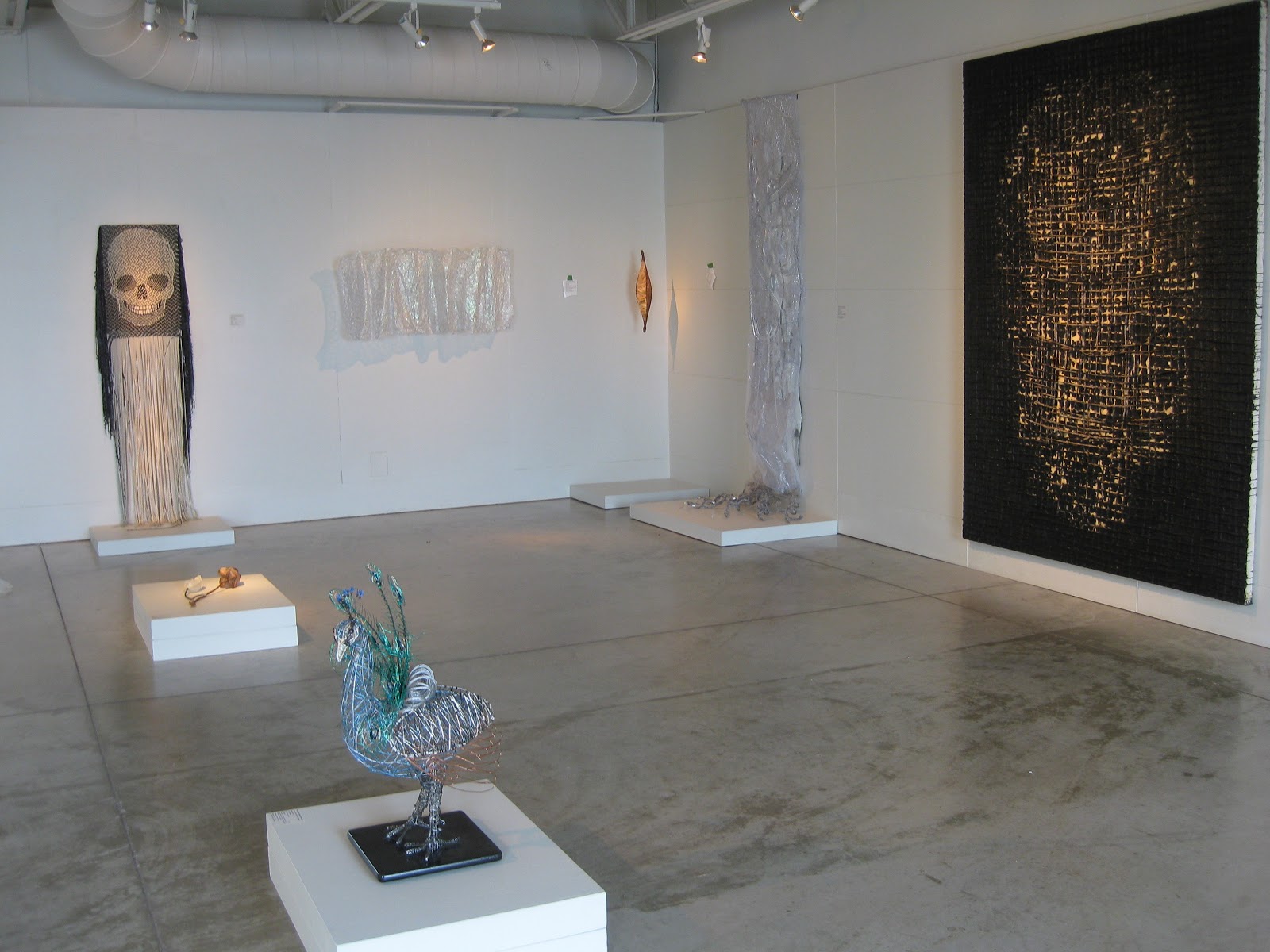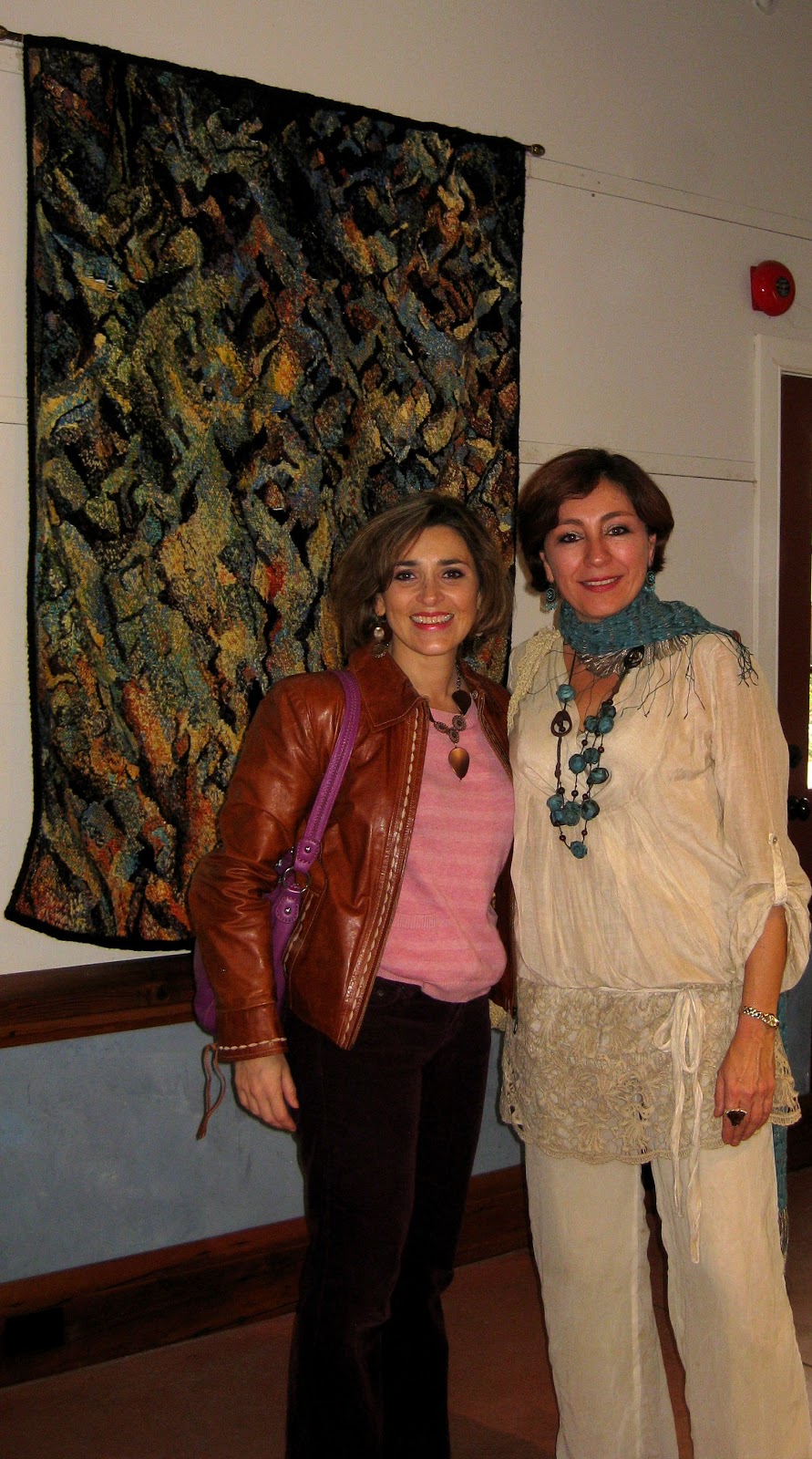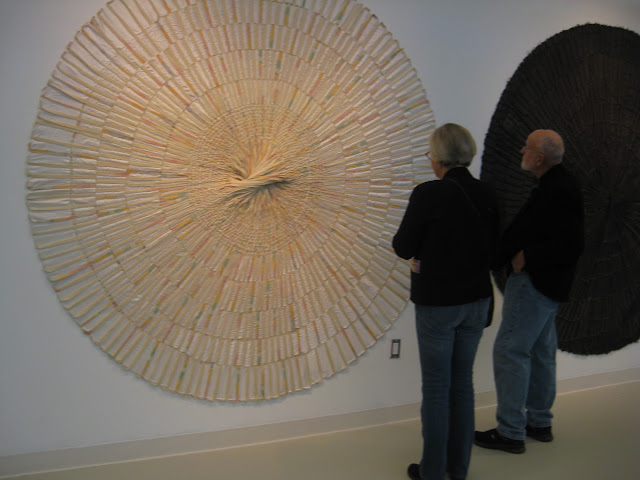Tapestry As An Art Form
By Ixchel Suarez
When we come
across the word tapestry, what is the first thing that comes to mind? Probably
it would be those ancient huge tapestries generally called Gobelins, where the
hunting scenes inscribed in the verdures, take our eyes into a deep field or
forest. Or maybe we think of the great fantastic European castles with
mythological animals like Unicorns or winged lions. Maybe we would go even
further back in antiquity, when Coptic
tapestries appeared in several areas of Greece, or we think of the Peruvian
lands where plain weaves have been found that date from 1000 BC or even
older.
Even though
tapestries were known on the banks of the Nile River Greece
and also in Pre-Columbian Peru or Mexico
as well as in China
Since actual textile fragments are rarely
preserved, our information about tapestry from those remote times is based
largely on written descriptions, paintings or sculptures. Some samples of
Egyptian specimen from royal tombs date from 1483 BC. Examples of Chinese
tapestries from the 8th century are now in the Taimadera
Temple in Japan church of St Gereon
at Cologne Europe
in the early Middle Ages. Tapestries have evolved from diverse techniques of
textile forms and shapes. However, the basic structure has remained the
same.
As we survey our evidence for the various
types of basic weaves thus collected from a wide geographical and temporal
expanse, we begin to see some emerging patterns. emerging. Broadly speaking, the materials
used for weaving influenced the variety of application and the structure of the woven
article in the Neolithic and Early
Bronze ages. Eventually, these basic
weave structures begin to influence each
other. It is undoubtedly no accident that the difference between loom traditions
correlates with the division between the European set of weaves on one hand
(from the home of the warp-weighted loom) and the Egyptian and Middle Eastern
traditions on the other (in two beam ground-loom territory). It is also no
coincidence that this division, while it lasted, correlates with the fact who
was and who was not using wool. Everyone was familiar with linen, but for Egypt
But let's not get too deep into structural
details. The question remains: Was
tapestry an art form then? Is it still an art form now? The re
is a tendency to compare the art of tapestry with the inseparable art of
painting. The distance however is
considerable, for there is a basic difference between tapestry which is a
manual craft, subject (but not exclusively) to a model, and painting, which
enjoys complete creative freedom. Tapestry, one might say, loses certain
spontaneity, yet other characteristics which distinguish it from painting
contribute to its richness and provide it with immense artistic impact.
Where, then is the essence or the heart
of the weaver when one should follow a
cartoon-project but on the way finds the media as the most expressive language? When, in the transfiguration, the project becomes
one with the artist? What happens to all those inner forces that during the
weaving process seem to attack us, make us feel drawn to this or that material
for our project? Is it valid to let our explorations run free - - to interpret
our feelings, or should we limit the creative process of weaving to suit the
cartoon?
As
a tapestry weaver and occasional painter for more than 24 years , I can tell
you that one of my main design-related challenges in tapestry is precisely this
problem: how to define the boundary between the design in the cartoon and the
creative weaving process itself. My background as Graphic Designer has taught
me how to compose and create my projects; my weaving skills on the other hand,
have taught me how to create the flow, how to use the technique to make it into a defined idea; my artistic
perception of the craft/art have led me to experiment with all the different
materials available - - not necessarily following traditional practices. It
seems essential to me, that sometimes,
in order to pursue the idea, the weaver
has to sacrifice something to
accomplish a goal.
This is tough to
do. As an artist, I am constantly choosing between the original project, the
technique and the final vision of my work. To sacrifice one in order to
preserve the other is for me the ultimate artistic expression.
During the Middle Ages tapestry was a "useful
art". Hangings adorned the walls of royal and princely residences but also
those of churches. Chambers of tapestries were effective insulations against
draughts. But the fundamental purpose of tapestry was to cover a large surface
and offer the possibility of monumental decorations. However, it was the
technique which provided the force of expression and it set mural tapestry on the level of great
art. That was understood by every well
positioned person enamored by beauty, regardless who created the work or where it originated from. . It is in this
period that the greatest series of tapestries made their appearance, whether
religious, pagan, mythological or
realistic. The looms of Europe produced innumerable tapestries to celebrate great
individual deeds and conquests or to proclaim the teachings of the Church. Thus
we see that in every period in time, tapestry was considered a work of
sumptuous, expressive and original
art.
During
the last century, tapestry lost its role of major importance. Today, after more
than a hundred years, thanks to the joint efforts of cartoon painters and
weavers, it has once again become an expression of the human spirit. However, it has also generated a particularly controversial debate regarding
the division between design, craft and
art. To
clearly define the role between
the painter who visualizes the project and the weaver, who either
executes or interprets it, may seem to serve a practical purpose; it is also
brutal and somehow rash. It makes
no sense to me to get caught up in trying to establish a “supremacy” amongst the many people who are involved in
the design and production fibre art. As
art, tapestry becomes the media with
which to explore and develop
possibilities; as such, it is a glorious
combination of aesthetics, concept and
technique.
Contemporary fibre art is interesting and
vital precisely because it exists in the space between the rigid and divisive categories of craft and art. . Tapestries are no longer classified as either
functional/educational or aesthetic, but have become interpretations and
expressions of individuals. As such,
they exist on a new plane. Through
these textiles, individuals are able to
demonstrate a balance of design and craft.
While
recognizing that an avant-garde approach is always important, there is also a
need for good, sober, contemporary work that satisfies the mass of consumer
design. Ultimately, it is variety that characterizes the renaissance of
tapestry production. I am glad that reviving the art of tapestry is breaking
free of dogmatism.
Tapestry weavers prove with their work that
excellent knowledge of the craft of weaving is not enough. One has to be able
to express aesthetically what fills the human soul. This has always been at
centre of the artistic element. Tapestry requires patience. It seems out of
sync with the current speed of life, the technological advances and the many
forms of rapid communications. Is there no place for such a "slow"
and meticulous art as tapestry? Is there no time for infinite patience? My
personal refuge is precisely to escape into this kind of "motionless"
time. It makes my mind travel to other times and spaces. It makes my body enter
into a relaxed state of mind where I can forget about - - but also deal with -
- my every- day life stress. I always look forward to the moment when I can sit
in front of my frame loom, and enter another dimension on my life.
Tapestry is not only about the craft of
weaving, nor is it simply textile artists "doing their thing". It
opens up possibilities of expression and thought. It opens up possibilities to
interpret the past and to examine the present. It makes us aware of dogmas and
our ability to go beyond .
I
wish you weavers many such "woven moments" in your life. Share your
intricate feelings with your projects! Tapestry as an art form - - an
expression of our innermost self - should never vanish.
































































































